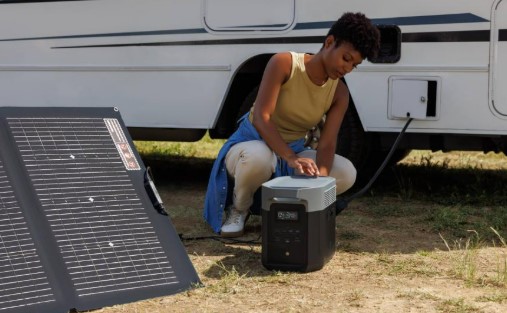When the power goes out, having a reliable source of backup power is crucial. You might be weighing the options between a portable power station and a traditional generator. Both serve the same primary function—providing electricity when the grid is down—but they differ in technology, use cases, and environmental impact. To make an informed decision, it’s essential to understand the differences in performance, portability, and cost. This guide will break down these elements, ultimately helping you choose the power solution that aligns best with your needs, whether you are planning a camping trip or looking to safeguard your home during blackouts.
What Is a Portable Power Station vs. a Traditional Generator?
How Portable Power Stations Work
Portable power stations function as large batteries that store electrical energy. They can be charged using standard AC outlets, solar panels, or car adaptors. Once charged, these devices supply power to various electronic gadgets and small appliances via USB ports, AC outlets, and DC carports. Their operation is silent since they don’t rely on an engine, making them an excellent eco-friendly option for low to moderate power needs.
How Traditional Generators Work
Traditional generators rely on internal combustion engines, typically powered by gasoline, diesel, or propane. The engine converts fuel into electrical energy, producing a continuous power output. These machines are known for their ability to generate substantial power, suitable for running household appliances and construction tools during power outages or in off-grid situations. However, they tend to be heavier, noisier, and require more maintenance over time.
Key Differences in Performance, Portability, and Use
Power Output and Runtime
Traditional generators usually provide higher wattage outputs, making them ideal for heavy-duty appliances. They can run for extended periods, limited mainly by fuel availability. On the flip side, portable power stations offer limited power capacity, suitable for charging devices and running small appliances. This limitation in power output translates to shorter runtimes but suffices for temporary, low-energy use.
Portability and Weight
Portable power stations are designed with mobility in mind. They are compact, lightweight, and generally feature handles for easy transport. This makes them perfect for outdoor activities like camping or tailgating. Conversely, traditional generators are bulkier and heavier, often requiring wheels for mobility. They are less practical for constant moving but fit for static, high-power demand locations.
Setup and Ease of Use
Operating a portable power station is straightforward: charge and plug in your device. They don’t need fuel, oil changes, or complex setups, appealing to those who prefer simplicity. Traditional generators need more involved setups, including fueling, maneuvering controls, and periodic maintenance checks. This extra step might be daunting for first-time users but ensures robust, reliable power.
 Noise, Emissions, and Maintenance Considerations
Noise, Emissions, and Maintenance Considerations
Operating Noise Levels
Portable power stations operate silently, making them ideal for quiet environments like campsites or residential areas. In contrast, traditional generators produce engine noise that ranges from moderate to loud, depending on the model and size, which can be disruptive in settings where low noise is preferred or required.
Environmental Impact and Emissions
Using portable power stations presents minimal environmental impact as they produce no emissions. This advantage is crucial in preserving air quality and promoting health. Traditional generators emit exhaust gases due to fuel combustion, contributing to pollution. Environmentally-conscious users may prefer the clean energy offered by power stations.
Maintenance Needs and Safety
Portable power stations require minimal maintenance, mainly involving the lithium battery. Traditional generators need regular upkeep: oil changes, fuel checks, and air filter replacements. Generators also pose a safety risk due to fuel use and carbon monoxide emissions, necessitating careful operation and proper ventilation.
Price Comparison and Best Use Cases
Initial and Long-Term Costs
Traditional generators cost less upfront but require ongoing expenses for fuel, maintenance, and repairs. In contrast, portable power stations have higher initial prices but lower running costs, making them more economical over time. This long-term efficiency makes them a smart investment for those seeking sustainable and hassle-free power solutions.
Ideal Scenarios for Each Option
Traditional generators are ideal in scenarios requiring high power outputs and extended runtimes, such as powering construction sites or emergency household electricity. Portable power stations are best for activities that demand clean, quiet energy with less output, like outdoor recreation or minor home emergencies.
Conclusion
Choosing between a portable power station and a traditional generator depends on your specific needs. If you value clean energy, silence, and portability, a portable power station is your best bet. However, for higher power demands and longer usage, a traditional generator is more suitable. Assess your energy requirements and usage scenarios to select the most appropriate backup power solution.

